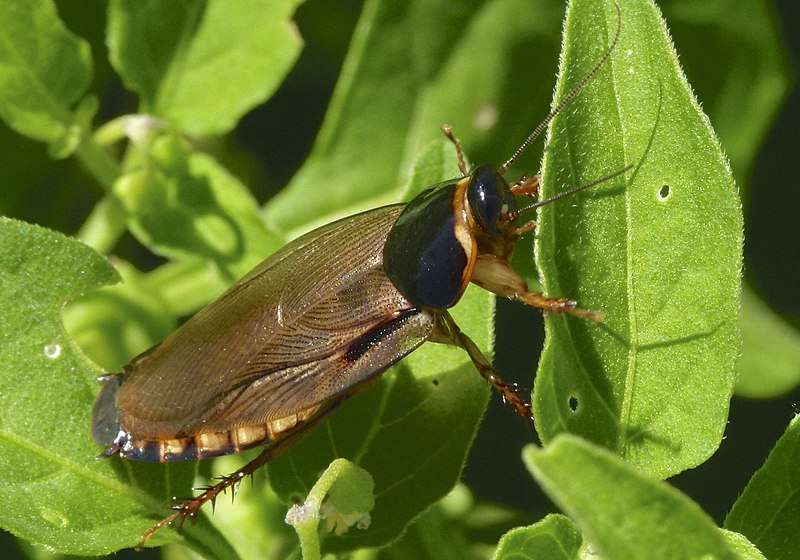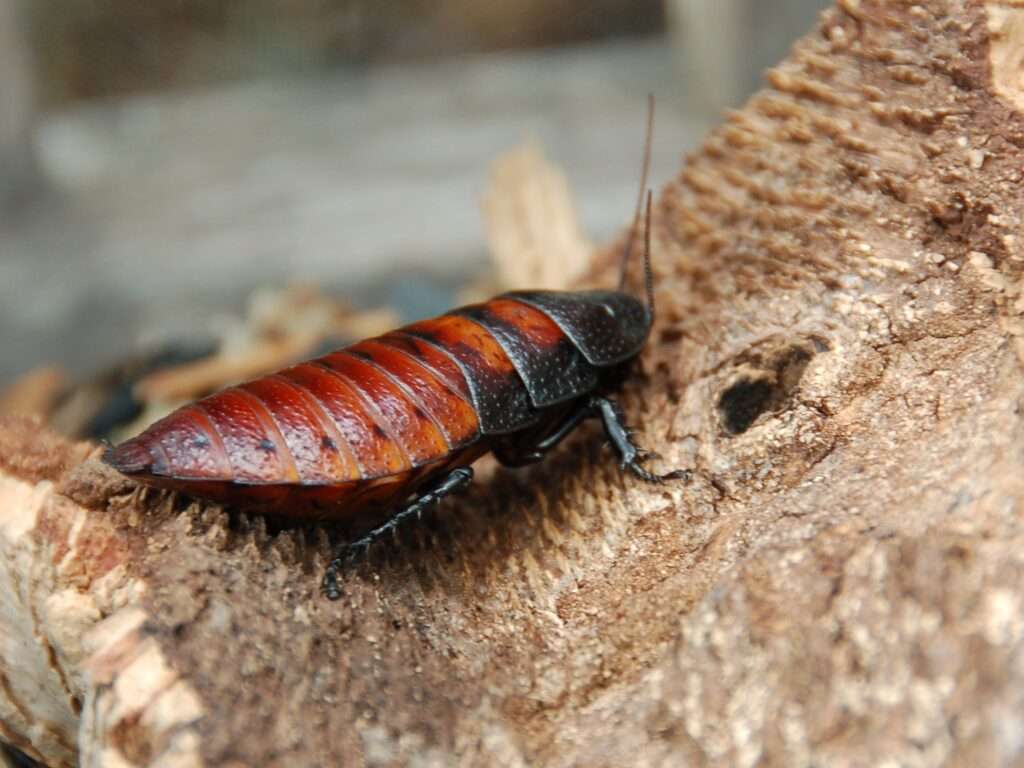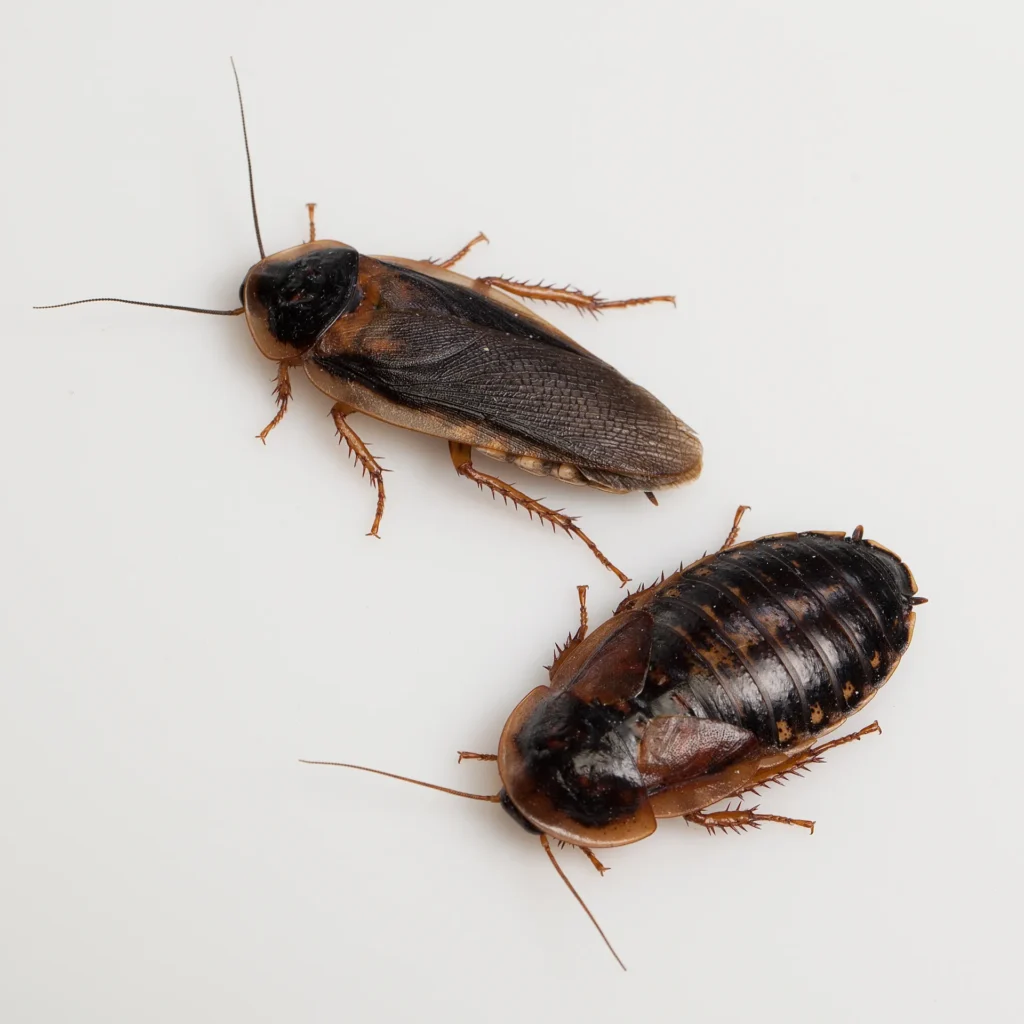
It is a widespread plant pest that originated in the Indo-Malayan region and has since spread to tropical and subtropical areas of the world, as well as to temperate climates in isolated populations where protective habitats like greenhouses provide shelter for individuals accidentally transported with plant soil. From its sexual ancestor (P. indicus) produced the numerous clonal strains of this species and reproduces through parthenogenesis in its populations, which are female.
Description
- Adults have paler brown wings with dark brown to black bodies and are lustrous and they are around 18 to 25 mm (0.7 to 0.98 in) in length.
- A thin white stripe runs along the pronotum’s (head shield) front edge. Male adults, however rarely produced, have wings longer than female adults which enclose the belly completely. Despite this, both sexes are not good flyers.
- When nymphs are born, they are around 4.5 mm (0.18 in) long. Mandibles and spines are orange-brown, and the eye patches are darker than the rest of the head. Translucent white.
- As the exoskeleton developed, it became harder when exposed to air, turning from translucent on the bottom and legs to a glossy brown color in five to six hours. Older nymphs get smooth, dull black posterior segments and lustrous black anterior abdominal segments.

Range
P. surinamensis, which has its origins in the Indo-Malay region, is now widespread. It can be found across the world, notably in greenhouses (also known as glasshouses) or other rooms heated during the colder months. It can also be seen temporarily forming populations in safe conditions in temperate climes.
The Surinam cockroach enjoys damp, gloomy spaces, like a backyard. They are a type of insect that lives almost entirely underground. Additionally, can discover them in garbage bags, compost piles, woodpiles, decaying limbs, boulders, lawn thatches, and other detritus. in home plants even.
Diet
Surinamensis cockroaches could consume the given fungal material, and vigorous feeding was regularly seen during the trial. After a brief initial feeding session, the cockroaches would drag fungal material down into the soil and occasionally eat things on the soil’s surface.
Not pet, it’s Pest
The species is not a typical household pet, despite occasionally being discovered inside of dwellings. It is a pest of tropical areas, plantations and gardens, and it can be particularly troublesome in heated greenhouses where vast numbers of this species can hide during the day and come out at night to nibble on plants’ tender portions. It is believed that it enters buildings and homes through potted plants or plant mulch.
Indoor infestations are frequently under control by using granules and sprays on potted plants.. A spray of residual barrier may be helpful around houses, and outside treatment should concentrate on affected areas such wood heaps, mulch, and foundation plants.
Table





